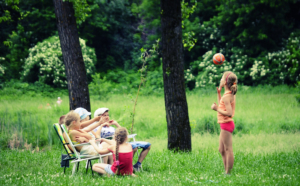Sex Trafficking and Child Poverty in Belarus
 Belarus is a country in Eastern Europe which only recently gained its independence in August 1991 after a long history of the Soviet Union. The country, occupied by the Russian Empire since the 18th century, fell into Nazi hands years after the Russian Revolution, and following World War II, the country returned to Soviet Union’s control in 1944. In 1994, three years after declaring independence, Aleksandr Lukashenko became president and has been in office since his initial election.
Belarus is a country in Eastern Europe which only recently gained its independence in August 1991 after a long history of the Soviet Union. The country, occupied by the Russian Empire since the 18th century, fell into Nazi hands years after the Russian Revolution, and following World War II, the country returned to Soviet Union’s control in 1944. In 1994, three years after declaring independence, Aleksandr Lukashenko became president and has been in office since his initial election.
Vulnerable Communities
In 2017, the rate of child poverty in Belarus stood at 11.3% while the population as a whole stood at 5.9%. The most vulnerable communities and families have been and still are those that live in more rural areas of the country, single-parent homes and homes with three or more children.
The multidimensional child poverty (MDCP) is higher than the overall poverty rate in the country. It is 16.7%, but the number varies across individuals. For larger households with three or more children and families in rural areas, the rate stands at 29.5% and for single-parent households, the rate is 23.8%, UNICEF reports.
UNICEF defines MDCP as “the situation of children suffering from multiple deprivations, rather than just income deprivation. Children may lack necessities or basic rights such as access to water and sanitation, a healthy, diverse diet, adequate living space or access to a personal computer to aid learning.”
Child Sex Trafficking in Belarus
Due to child poverty in Belarus, these underprivileged groups are especially vulnerable to trafficking, one of the major issues in the country. According to Interpol, Belarus has been identified as the country in Eastern Europe with the single most individuals identified in child abuse material. In 2013, there were a total of 91 victims in explicit abuse photographs and videos from Belarus.
The number of cases only increased. In 2015, there were a total of 506 separate cases of “commercial exploitation of children,” according to ECPAT. The traffickers often take victims abroad to countries like Russia, Poland and Turkey where their exploitation continues. The number of victims each year has fluctuated, but has remained consistently high, with the government identifying 251 victims in 2019.
The Good News
Although sex trafficking and child poverty in Belarus remain prominent, there is international support from NGOs and international aid groups to provide resources to victims and low-income households, according to the U.S. Department of State.
The number of victims of child trafficking has slowly increased since 2020; although, the government of Belarus has made small steps in providing resources for these vulnerable individuals. The government provides housing for up to six months in centers for children between the ages of three to 18 as well as free legal assistance, the U.S. Department of State reports. In July 2019, Belarusian and Israeli officials worked together to coordinate an operation to take down a sex trafficking ring composed of Belarusian and Ukrainian women, leading to the arrest of 15 people.
To address child poverty, the country has begun to provide aid to low-income families and families with underage children. There are also one-time benefits provided to families experiencing hardships and children up until 2 years old are provided with food supplies, regardless of income. Belarus is making efforts to address the issues of child poverty and human trafficking. No matter how slow, there are still efforts being made.
– Maya Renfro
Maya is based in Chicago, IL, USA and focuses on Good News for The Borgen Project.
Photo: Flickr
